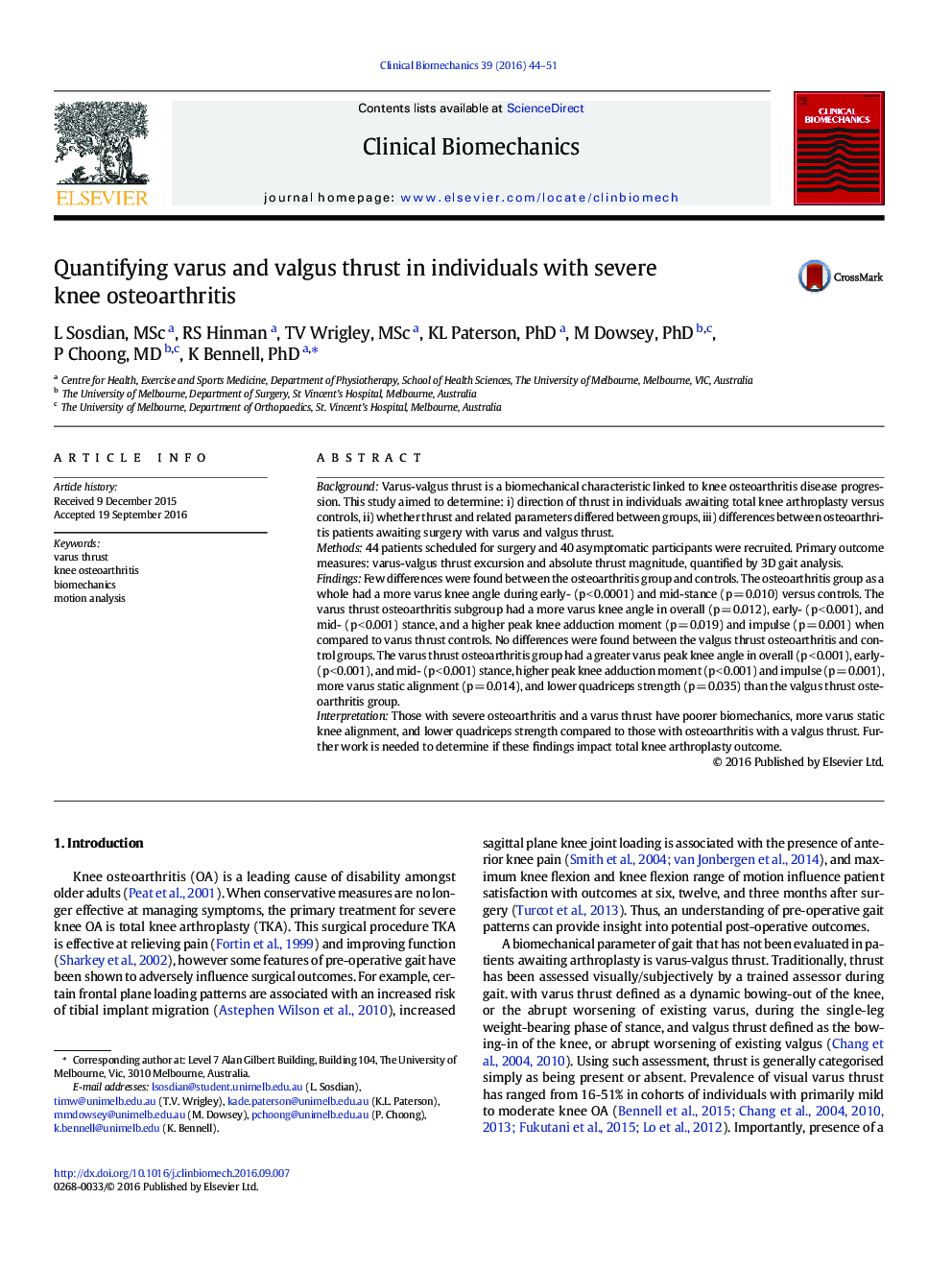| Article ID | Journal | Published Year | Pages | File Type |
|---|---|---|---|---|
| 6204572 | Clinical Biomechanics | 2016 | 8 Pages |
â¢3-dimensional gait analysis was used to quantify varus and valgus thrustâ¢Few differences in gait biomechanics between controls and those with osteoarthritisâ¢Osteoarthritis patients with varus thrust had worse biomechanics than valgus thrustâ¢Further work is needed to determine if findings impact knee replacement outcome
BackgroundVarus-valgus thrust is a biomechanical characteristic linked to knee osteoarthritis disease progression. This study aimed to determine: i) direction of thrust in individuals awaiting total knee arthroplasty versus controls, ii) whether thrust and related parameters differed between groups, iii) differences between osteoarthritis patients awaiting surgery with varus and valgus thrust.Methods44 patients scheduled for surgery and 40 asymptomatic participants were recruited. Primary outcome measures: varus-valgus thrust excursion and absolute thrust magnitude, quantified by 3D gait analysis.FindingsFew differences were found between the osteoarthritis group and controls. The osteoarthritis group as a whole had a more varus knee angle during early- (p < 0.0001) and mid-stance (p = 0.010) versus controls. The varus thrust osteoarthritis subgroup had a more varus knee angle in overall (p = 0.012), early- (p < 0.001), and mid- (p < 0.001) stance, and a higher peak knee adduction moment (p = 0.019) and impulse (p = 0.001) when compared to varus thrust controls. No differences were found between the valgus thrust osteoarthritis and control groups. The varus thrust osteoarthritis group had a greater varus peak knee angle in overall (p < 0.001), early- (p < 0.001), and mid- (p < 0.001) stance, higher peak knee adduction moment (p < 0.001) and impulse (p = 0.001), more varus static alignment (p = 0.014), and lower quadriceps strength (p = 0.035) than the valgus thrust osteoarthritis group.InterpretationThose with severe osteoarthritis and a varus thrust have poorer biomechanics, more varus static knee alignment, and lower quadriceps strength compared to those with osteoarthritis with a valgus thrust. Further work is needed to determine if these findings impact total knee arthroplasty outcome.
